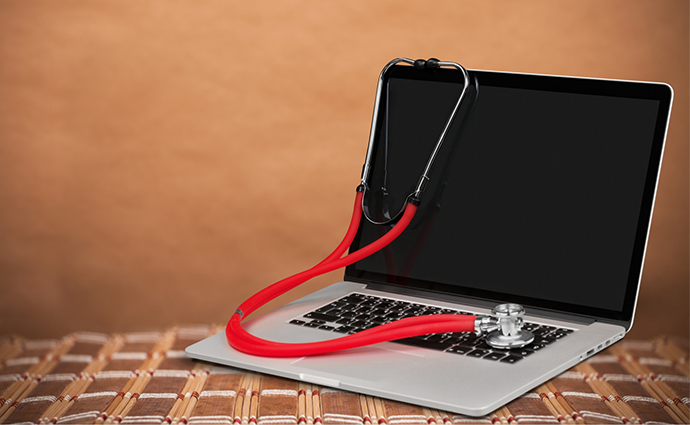FCC Launches Connected Care Pilot Program, Announces 36 Award Recipients
The Federal Communications Commission has posted new guidelines for its Connected Care Pilot Program and announced 36 telehealth projects that have qualified for funding.

Source: ThinkStock
- Some 36 telehealth programs across the country will get federal funding through the Federal Communications Commission’s Connected Care Pilot Program.
The FCC approved new guidelines for the $100 million program during its Thursday meeting, then announced the second road of approved applications. The 36 new projects will account for $31 million in funding, and join 23 projects and $26 million approved in January.
The new guidelines follow criticism that the FCC hasn’t been transparent with either this program or the COVID-19 Telehealth Program, which is due to begin its second round soon. Critics had said the agency wasn’t explaining in detail how applications were approved, why some applications were turned down or how the funding should be used.
“Today, we provide the guidance that participants in this program need to begin their projects,” Acting FCC Chairwoman Jessica Rosenworcel said in a press release accompanying the announcement. “This includes clarifying what equipment and services are eligible, providing details regarding the competitive bidding process, and explaining just how reimbursement will work.”
“I’m particularly heartened that many of these projects will focus on treating high-risk pregnancy and maternal health, an area that needs improvement and I am hopeful that connected care can help,” she added. “In addition, other projects are designed to provide care for opioid dependency, mental health, and chronic conditions like diabetes and heart disease. I’m looking forward to the good these projects can do and just as importantly what we can learn from this effort.”
READ MORE: FQHC Consortium Using FCC Award, Telehealth to Tackle the Digital Divide
FCC Commissioner Brendan Carr, who has championed the program since its inception in 2018, praised the new guidelines, which were required before the first batch of award nominees could begin their projects.
“With advances in smartphones, tablets, and other connected devices, patients no longer need to visit brick-and-mortar facilities to receive high-quality care. Connected care is facilitating the delivery of patient-centered health care from the comfort of a patient’s home,” he said in a separate release. “Today’s action brings us one step closer to getting funding into the hands of the first batch of awardees. These dollars will go toward supporting the networks and equipment that facilitate connected care services that are crucial to patients …”
Among the programs chosen in the second round are:
- The Yale New Haven Health System, which is getting roughly $1.28 million in total (four hospitals in the network filed separate applications) to expand broadband connectivity to allow about 1,800 people to access telemental health services;
- Catholic Health Initiatives, a network of 36 sites in Arkansas, Iowa, Kentucky, Minnesota, North Dakota and Nebraska, which is getting roughly $6.1 million to expand remote patient monitoring and virtual care services to vulnerable populations, especially low-income rural residents;
- Children’s National Medical Center in Washington DC, which is getting about $1.7 million to expand telehealth and RPM services to almost 28,000 residents in the region and nationwide;
- Hudson Headwaters Health Network, a consortium with sites in 13 upstate New York communities, which is getting almost $770,000 to improve broadband access and telehealth services for more than 81,000 residents;
- The Mental Health Center of Greater Manchester, a consortium with six sites in the New Hampshire city, which is getting almost $560,000 for a pilot project to provide telehealth and RPM services for an estimated 11,000 residents dealing with mental health and substance abuse issues;
- The University of Florida’s Department of Pediatrics, which is getting $612,000 to expand RPM and telehealth services for roughly 10,000 low-income residents and veterans who typically travel long distances for behavioral health and chronic care services; and
- The University of Hawaii’s John A. Burns School of Medicine, which is getting roughly $320,000 to expand telehealth and RPM services, improve broadband access and provide digital literacy support for roughly 1,000 low-income and veteran residents.
The three-year, $100 million program is designed to help projects “defray the costs of providing certain telehealth services for eligible health care providers, with a particular emphasis on providing connected care services to low-income and veteran patients.”
Both the Connected Care Pilot Program and the COVID-19 Telehealth Program come at time when interest in telehealth and RPM is high, due in large part to the coronavirus pandemic. And while adoption soared during the height of the pandemic, it also brought to light the challenges faced by underserved communities in accessing healthcare, including telehealth services.
READ MORE: How COVID-19 Affects the Telehealth, Remote Patient Monitoring Landscape
Many of these new projects are being designed to address those challenges, often called social determinants of health. They include lack of resources for acquiring or accessing telehealth (especially audio-visual services), insufficient or inefficient broadband capacity, and cultural and ethnic issues that push people away from healthcare.
“The Connected Care Pilot Program will make an enormous difference in communities around the country, but our work is far from done,” FCC Commissioner Geoffrey Starks said in a separate press release. “Broadband can bring back the house call in a new way and expand the reach of doctors, mental health professionals, and other providers. That’s a game changer— but not for the many communities that remain on the wrong side of the digital divide. In the United States, tens of millions of people either can’t get online or are making great sacrifices to get connected. To fully realize the benefits of telehealth, we need to finish the work of ending internet inequality.”
